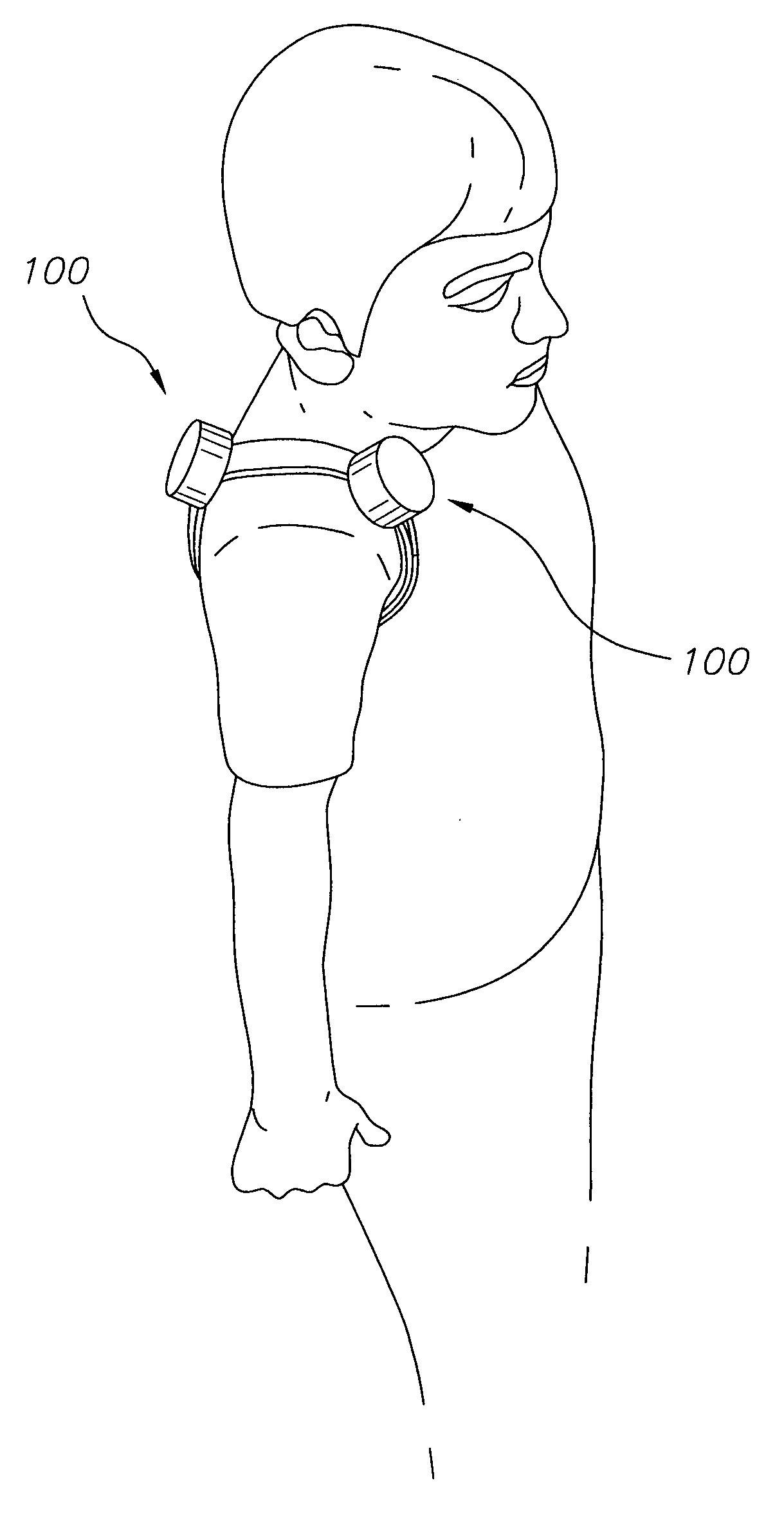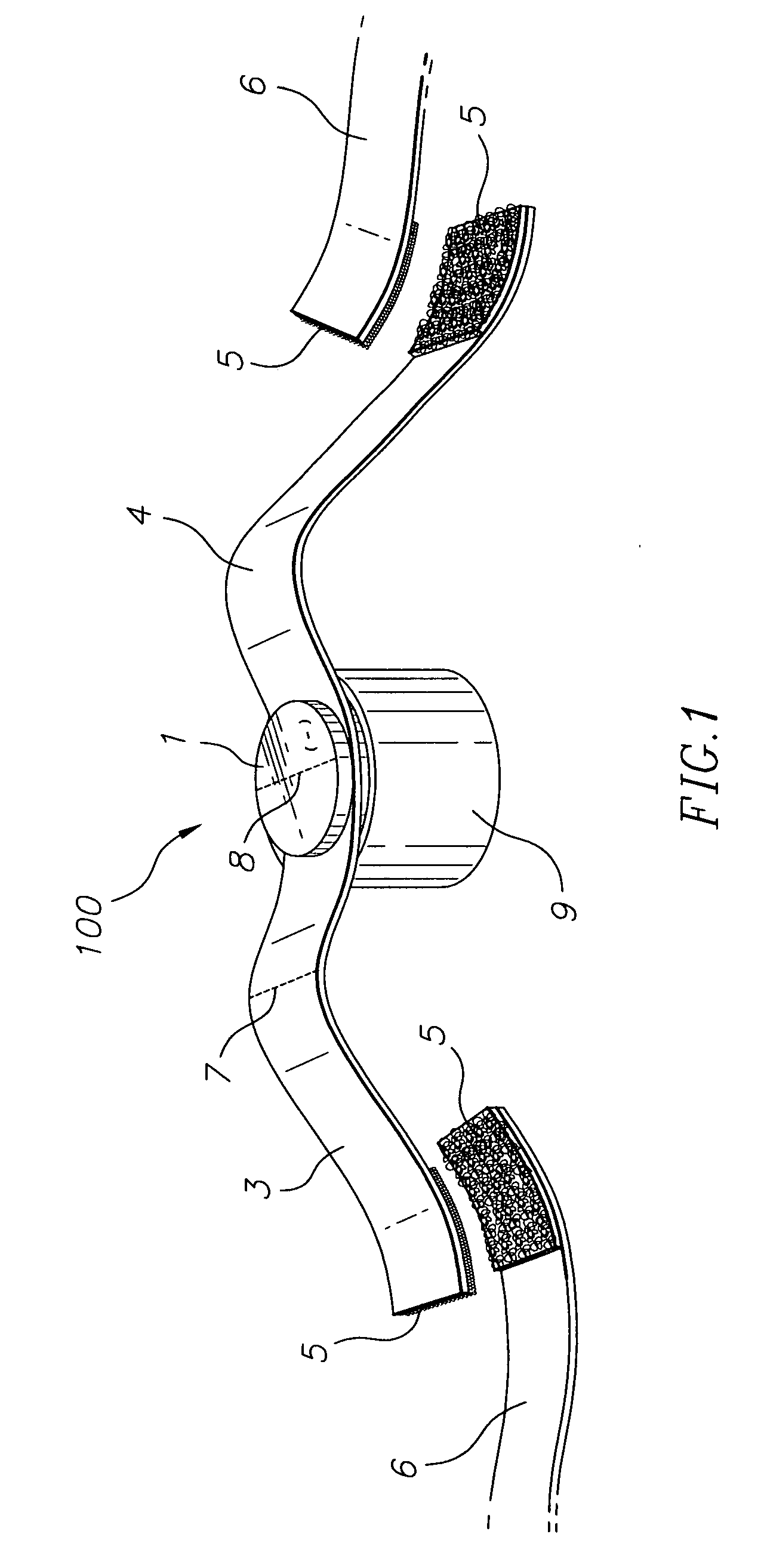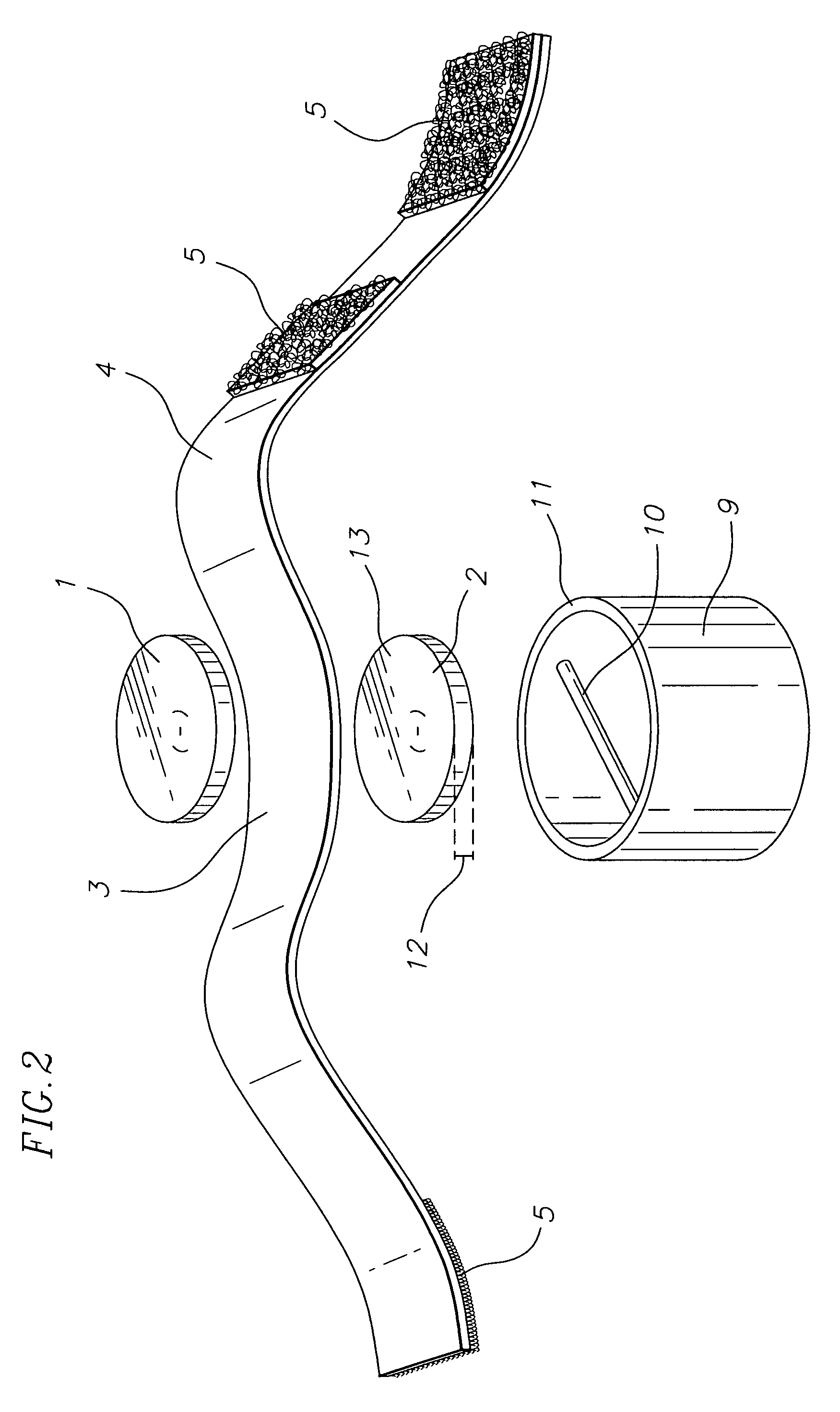[0003]Many different holders for magnets have been developed such as the belt disclosed by Bakst (U.S. Pat. No. 5,707,333) that can be worn around the
waist of a user with the wide portion of the belt comprising an array of magnetic sources arranged by a supporting web. Gilson Woo (U.S. Pat. No. 7,097,610B2) discloses a
wrap around belt to securely hold the magnets sewn-in or encased in fabric lining or adjustable Velcro type fasteners. James Snyder (U.S. Pat. No. 6,926,661B2) describes a magnet orientation
assembly in combination with a mattress or mattress liner where an array of magnets of oppositely disposed poles can be maintained in a predetermined, operative orientation even as the individual moves throughout a
night sleep or other
rest period by using a support structure that also allows removal of magnets for cleaning, repairing or replacing. Brand N. Griffin, et al. (U.S. Pat. No. 6,554,787B1) disclosed a headband for treatment of
headaches having multiple pockets at the interior of the headband for housing one or more heating, cooling, magnetic and vibratory elements to provide heat, cold, vibration and
magnetism or a combination thereof to the head.
[0005]It is therefore an object of this invention to provide a simple holder for magnets used in magnetotherapy that allow movement of the magnet along a strip of material thereby allowing adjustment of position to cater to the location and position of the affected area.
[0006]It is also an object of this invention to provide a magnet holder that can add or eliminate magnets according to the intended usage.
[0007]It is a further object of this invention to provide a holder that will allow a user to easily reverse the polarity of the magnet during the course of treatment.
[0009]The invention relates to a magnetotherapy device for alleviating pain,
healing tissues, rebuilding fractures and increasing circulation of blood. This device comprises a pair of disc shaped magnets with flat inside and outside surfaces, a top magnet and a bottom magnet attached to each other having a strap sandwiched in between, the pair of magnet movable along a length of the strap; a non-magnetic holder having a magnetic strip attaching to the bottom magnet, leaving a surface of the same polarity of the top magnet exposed, the pair of magnets removable from the holder for easily reversing and replacing the bottom magnet with the top magnet; and, a
fastener means for wrapping around the strap to a part of a
human body, thereby contacting the exposed surface of the magnet having the same polarity with the part of the body. A second holder having a magnetic strip attaching to the top magnet can also be provided to cover the exposed surface of the pair of magnets before storage. The non-magnetic holders can have a hollow or a
solid interior under the magnetic strip. A second strap with a
fastener pairing with the
fastener means of the strap sandwiched between the top and bottom magnets can also be provided to lengthen the strap. Instead of just one pair, a plurality of magnetic pairs can be provided along the strap, however, it is important that the exposed surfaces of all magnetic pairs have one uniform polarity. The magnet in this device has a
magnetic flux density of 2700-5000 gauss. The strap is made of fabric or leather having a varying length or varying number of fasteners along the length of the strap. In the assembled device, the strap and the top magnet are above the holder.
 Login to View More
Login to View More  Login to View More
Login to View More 


